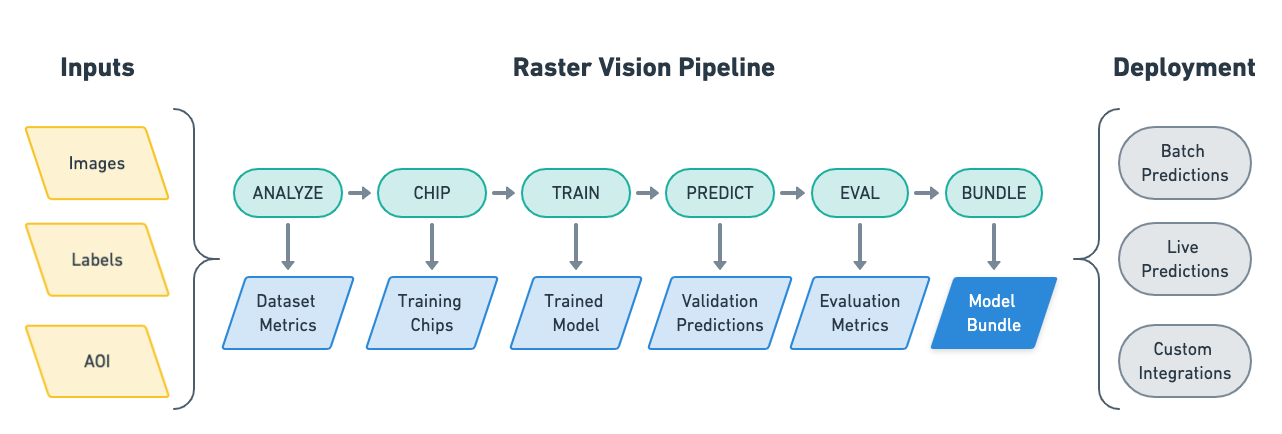
Security News
Weekly Downloads Now Available in npm Package Search Results
Socket's package search now displays weekly downloads for npm packages, helping developers quickly assess popularity and make more informed decisions.

Raster Vision is an open source Python library and framework for building computer vision models on satellite, aerial, and other large imagery sets (including oblique drone imagery).
It has built-in support for chip classification, object detection, and semantic segmentation with backends using PyTorch.

As a library, Raster Vision provides a full suite of utilities for dealing with all aspects of a geospatial deep learning workflow: reading geo-referenced data, training models, making predictions, and writing out predictions in geo-referenced formats.
As a low-code framework, Raster Vision allows users (who don't need to be experts in deep learning!) to quickly and repeatably configure experiments that execute a machine learning pipeline including: analyzing training data, creating training chips, training models, creating predictions, evaluating models, and bundling the model files and configuration for easy deployment.

Raster Vision also has built-in support for running experiments in the cloud using AWS Batch as well as AWS Sagemaker.
See the documentation for more details.
For more details, see the Setup documentation.
pipYou can install Raster Vision directly via pip.
pip install rastervision
Alternatively, you may use a Docker image. Docker images are published to quay.io (see the tags tab).
We publish a new tag per merge into master, which is tagged with the first 7 characters of the commit hash. To use the latest version, pull the latest suffix, e.g. raster-vision:pytorch-latest. Git tags are also published, with the Github tag name as the Docker tag suffix.
You can also build a Docker image from scratch yourself. After cloning this repo, run docker/build, and run then the container using docker/run.
Non-developers may find it easiest to use Raster Vision as a low-code framework where Raster Vision handles all the complexities and the user only has to configure a few parameters. The Quickstart guide is a good entry-point into this. More advanced examples can be found on the Examples page.
For developers and those looking to dive deeper or combine Raster Vision with their own code, the best starting point is Usage Overview, followed by Basic Concepts and Tutorials.
You can ask questions and talk to developers (let us know what you're working on!) at:
For more information, see Contributing.
We are happy to take contributions! It is best to get in touch with the maintainers about larger features or design changes before starting the work, as it will make the process of accepting changes smoother.
Everyone who contributes code to Raster Vision will be asked to sign a Contributor License Agreement. See Contributing for instructions.
Raster Vision is licensed under the Apache 2 license. See license here.
3rd party licenses for all dependecies used by Raster Vision can be found here.
FAQs
An open source framework for deep learning on satellite and aerial imagery
We found that rastervision demonstrated a healthy version release cadence and project activity because the last version was released less than a year ago. It has 2 open source maintainers collaborating on the project.
Did you know?

Socket for GitHub automatically highlights issues in each pull request and monitors the health of all your open source dependencies. Discover the contents of your packages and block harmful activity before you install or update your dependencies.

Security News
Socket's package search now displays weekly downloads for npm packages, helping developers quickly assess popularity and make more informed decisions.

Security News
A Stanford study reveals 9.5% of engineers contribute almost nothing, costing tech $90B annually, with remote work fueling the rise of "ghost engineers."

Research
Security News
Socket’s threat research team has detected six malicious npm packages typosquatting popular libraries to insert SSH backdoors.